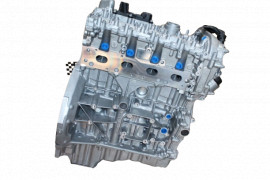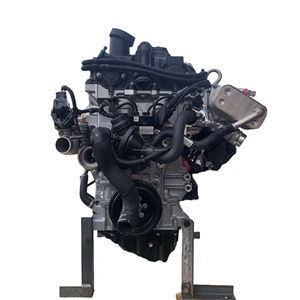Comprehensive Evaluation of a Subcompact Vehicle's Powertrain Capabilities
In the world of automobile design, the powertrain of a subcompact cars and truck stands as an important nexus where efficiency, performance, and technology assemble. From the engine's relentless quest of optimum performance to the transmission's smooth choreography of power distribution, every component plays a critical function in specifying the total driving experience.
Engine Performance Evaluation
In examining the engine performance of the subcompact cars and truck, a detailed evaluation reveals its efficiency and power output under numerous driving problems. The subcompact auto's engine, an essential component of its powertrain system, demonstrates good efficiency metrics. The engine's efficiency is noteworthy, as it optimizes fuel intake without compromising power delivery. Under regular driving problems, the engine operates efficiently, showcasing an equilibrium in between efficiency and fuel economy.
Moreover, when subjected to rigorous screening situations such as high-speed velocity or uphill climbs, the engine shows strength and responsiveness. Its power result continues to be consistent, supplying sufficient acceleration when needed. The subcompact cars and truck's engine is tailored to satisfy the needs of metropolitan driving, where quick velocity and nimble ability to move are important.
Furthermore, the engine's style includes modern-day innovations that enhance its efficiency features. Functions like turbocharging or variable shutoff timing contribute to boosted power distribution and torque, improving the general driving experience. To conclude, the engine efficiency of the subcompact vehicle emphasizes its ability to provide effective and trustworthy power outcome across various driving conditions.
Transmission Effectiveness Analysis
Examining the subcompact vehicle's transmission efficiency involves analyzing its efficiency in transmitting power seamlessly throughout numerous driving problems. The efficiency of a transmission system is important as it directly impacts the general performance and gas economy of the automobile. In reviewing transmission efficiency, variables such as gear ratios, shift timing, and the smoothness of equipment modifications are thought about. A well-designed transmission system ought to efficiently deliver power from the engine to the wheels while reducing energy losses.
One common method used to examine transmission efficiency is with dynamometer screening, where the power result from the engine is determined at the input and outcome shafts of the transmission. Discrepancies in between input and result power can indicate the degree of effectiveness of the transmission system. Furthermore, real-world driving tests are performed to examine how the transmission carries out in sensible circumstances. By evaluating these elements, designers can determine areas for improvement and maximize the transmission system for much better overall efficiency and effectiveness.
Gas Efficiency Examination
The examination of the subcompact vehicle's fuel efficiency involves a detailed analysis of its intake prices under numerous driving problems. Fuel efficiency is a crucial consider analyzing the general performance and cost-effectiveness of a car. By gauging the amount of gas eaten per system range took a trip, usually shared as miles per gallon (MPG) or liters per 100 kilometers (L/100 kilometres), the efficiency of the subcompact cars and truck's powertrain can be determined.

Furthermore, advancements in innovation, such as crossbreed systems, regenerative stopping, and automated start-stop systems, have actually significantly improved fuel effectiveness in contemporary subcompact cars. Manufacturers continue to introduce and optimize powertrain components to enhance fuel efficiency while meeting performance demands and environmental policies. Examining a subcompact cars and truck's gas more info here performance supplies beneficial insights for customers seeking sustainable and economical transport services.
Velocity and Handling Evaluation
An important element of examining the performance capabilities of a subcompact vehicle hinges on analyzing its acceleration and dealing with qualities. Acceleration is critical as it identifies how promptly the automobile can reach desired rates, affecting overall driving experience and maneuverability in numerous web traffic conditions. opel corsa engine. Subcompact vehicles are often preferred for their nimbleness and agility, making acceleration from grinding halt and throughout surpassing maneuvers important factors to take into consideration
When it pertains to dealing with, a subcompact cars and truck's capability to navigate edges, preserve security at broadband, and provide a responsive guiding feel are paramount. Limited city roads and winding roads call for exact taking care of to ensure motorist confidence and view security. Factors such as suspension adjusting, weight circulation, and tire hold play significant functions in determining a subcompact cars and truck's overall handling prowess.

Powertrain Elements Overview
Upon diving right into the ins and outs of a subcompact auto's efficiency, a comprehensive examination of its powertrain parts is necessary to comprehend the car's mechanical foundations. The powertrain of a subcompact auto commonly is composed of the engine, transmission, driveshaft, differential, and axles. Understanding how these parts work with each other is vital in evaluating a subcompact cars and truck's total performance, performance, and driving characteristics.
Final Thought
To conclude, the subcompact vehicle's powertrain capacities have been thoroughly examined in terms of engine efficiency, transmission performance, gas velocity, handling, and performance. The extensive review highlights the value of each component collaborating perfectly to supply optimal efficiency. Overall, the powertrain elements of the subcompact car have actually been discovered to be healthy and efficient, making it a reputable selection for chauffeurs seeking a portable and fuel-efficient vehicle.
In the realm of auto engineering, the powertrain of a subcompact automobile look at more info stands as an essential nexus where efficiency, technology, and performance converge.In evaluating the engine performance of the subcompact automobile, a detailed evaluation discloses its performance and power outcome under different driving problems.Assessing the subcompact automobile's transmission effectiveness includes examining its efficiency in transferring power effortlessly throughout numerous driving conditions. Understanding how these components function together is important in evaluating a subcompact automobile's overall performance, efficiency, and driving characteristics.In final thought, the subcompact vehicle's powertrain capacities have actually been completely assessed in terms of engine efficiency, transmission effectiveness, fuel performance, handling, and velocity.